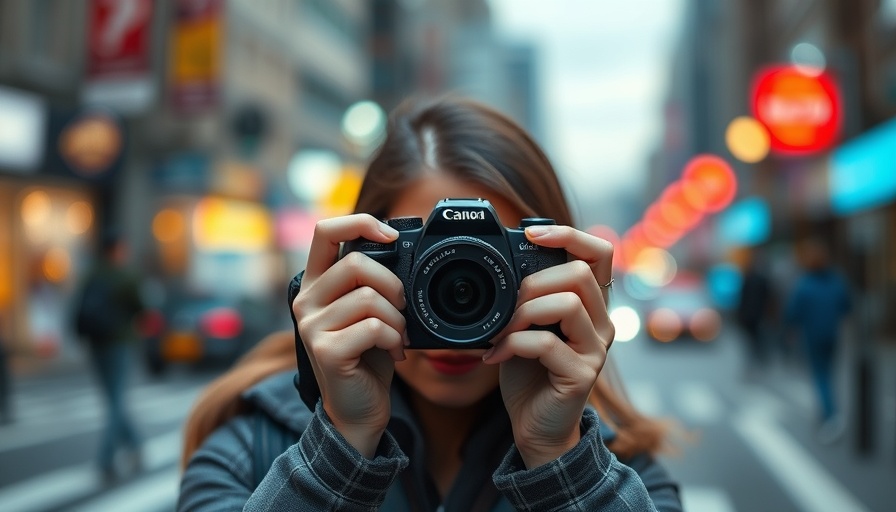
Unlocking Success with Perfect Image Sizes in 2025
When it comes to making money online, especially for affiliate marketers serious about their digital marketing ads, the visuals you use can make or break your campaigns. Imagine scrolling through Facebook or Instagram and stumbling upon a post that catches your eye because the image is perfectly sized and crystal clear. You stop, you click, and perhaps you even convert! That’s the power of image sizes, and in 2025, it’s more important than ever.
Why Image Quality Matters in Online Advertising
Think of your online presence as your business’s face to the world. Just like you'd want to show up at a meeting looking sharp, your images need to look polished. Awkwardly cropped or pixelated images can be a huge turn-off, causing potential followers to scroll past your posts quicker than you can say "affiliate marketing!" Ensuring that your images are the right size for each platform can lead to better engagement, better click-through rates, and ultimately, better conversion rates. It’s like putting your best foot forward, but in a digital way!
Understanding the Basics: Aspect Ratios and Pixels
Right now, you're probably asking, "What’s the deal with aspect ratios and pixels?" So let’s break it down. Aspect ratio is the relationship between width and height of your image, often written as width:height. For example, if you’re creating a cover photo for Facebook, the ideal aspect ratio would be 16:9, ensuring that your image fits just right. On the flip side, if you want a story image on Instagram, you would use a 9:16 ratio. And pixels? They measure image resolution. The higher the pixel count, the better the image quality — think of it like comparing a high-def TV to an old box set. The clearer, the better!
Essential Image Sizes for Major Platforms
Here’s a quick cheat sheet for the recommended image sizes as of 2025:
- Facebook: Profile photo - 320 x 320 pixels, Cover photo – 820 x 312 pixels
- Instagram: Post image - 1080 x 1080 pixels, Stories – 1080 x 1920 pixels
- X (formerly Twitter): Profile photo – 400 x 400 pixels, Header photo – 1500 x 500 pixels
- LinkedIn: Profile photo - 400 x 400 pixels, Background photo – 1584 x 396 pixels
- YouTube: Thumbnail image - 1280 x 720 pixels, Channel art – 2560 x 1440 pixels
This is just a quick look – and don’t worry! We can dive deeper; I promise it won’t be as boring as watching paint dry!
Common Misconceptions: “Size Doesn’t Matter”
Some folks say that "size doesn’t matter" – but that’s just not true when it comes to online advertising! Using the right sizes can significantly impact the performance of your ads. It’s like attempting to fish with a tiny hook when you really need a proper lure. You might be great at casting your net, but if your bait’s inadequate, you’ll catch very little! Doing your homework on the optimal sizes can help you gain more traction in the online advertising space.
Trends to Watch: Embracing the Future of Visual Content
As we move forward, video content and dynamic media are rapidly becoming the norm. According to industry experts, videos are set to dominate social media platforms in the coming years, pushing static images into the background. So, while perfecting those image sizes, start considering creating video content that is tailored to the same standards! Trust me, viewers love videos more than cat memes (and that’s saying something!).
Tools and Resources for Ad Campaign Success
Luckily, there are numerous tools that can facilitate easy image resizing for social media, such as Canva and Adobe Spark. These platforms allow you to drag and drop images, resizing them effortlessly to the correct format. And don’t even get me started on the wonders of programmatic advertising! AI tools can optimize your ad placements, so your audience sees your carefully crafted images at the right time. Now that’s something to giggle about!
Final Thoughts: Make Every Pixel Count!
As affiliate marketers, we need to pay attention to those pint-sized details that can make a massive difference. Optimal image sizes can lead to improved performance in your digital marketing strategies. So the next time you're putting together an advertising campaign, or just sharing photos of your breakfast (we all do it!), remember to think about image sizes. It could be the difference between a "meh" response and a revolutionary click! And if all else fails, remember: size may not matter...unless it’s in pixels!
 Add Row
Add Row  Add
Add 




 Add Row
Add Row  Add
Add 

Write A Comment